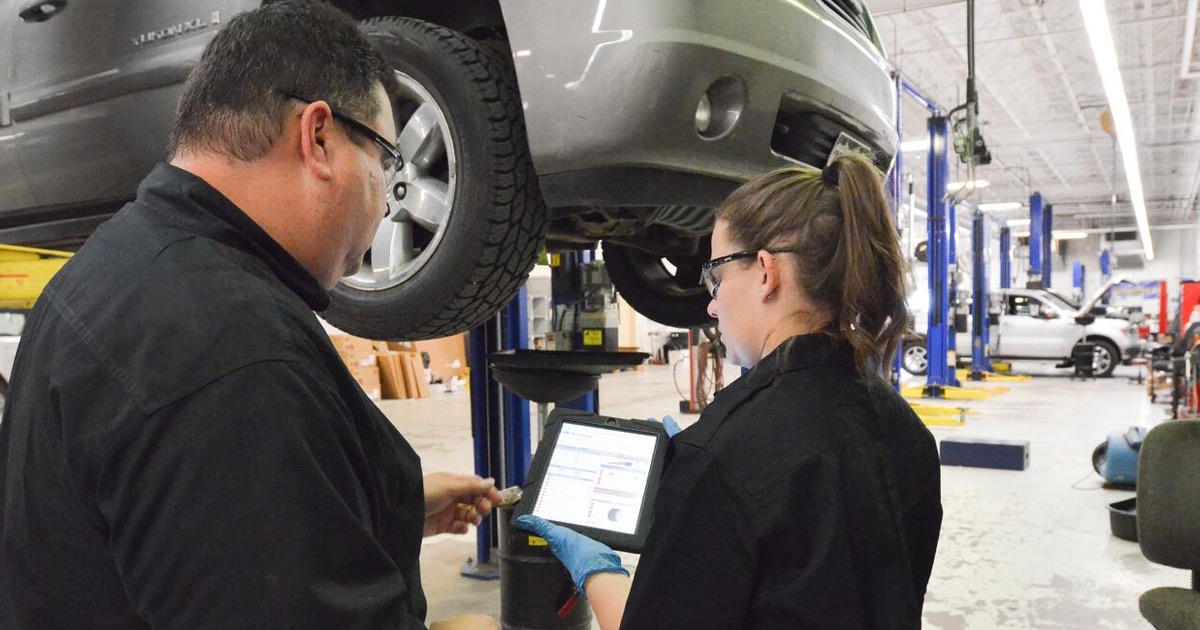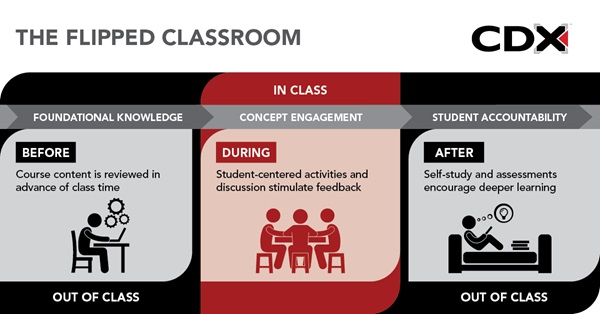Why the 'Flipped Classroom' Works for Automotive Technology

From videos to virtual reality, technology has brought about quite a few changes to the traditional classroom. One of those changes, the "flipped classroom," is becoming more popular than ever. Read on to learn more about the flipped classroom and how this model can be incredibly beneficial for automotive technology instructors (and students, too!)
What Is a Flipped Classroom?
A flipped classroom uses technology like videos and recorded lessons to “flip” the traditional classroom model by providing lecture materials online to students outside of class time.
This concept focuses on activities and practical application of the self-study materials during face-to-face class time. In other words, students complete their homework before class and work on hands-on assignments during class.
This is specifically beneficial for automotive tech instructors. For example, through the Fundamentals of Automotive Technology, Third Edition, instructors can leverage course materials for student use outside of the classroom, so time can be spent in class assisting students in applying newly learned skills. This edition includes a suite of photos and illustrations to visually enhance chapters. Most importantly, the new edition makes combines real world experience with practical instruction tying the classroom to the shop.
A flipped classroom model ultimately helps students apply skills. When students are expected to read or watch lessons before they go to class, they have more time to understand the material and think about their questions. This leads to more engaging classroom discussions, which helps students absorb the content during online learning.

During class, instructors can focus on helping students understand difficult concepts and learn how to apply that knowledge in the shop. Not only does this give students more opportunities to learn new material, it also ensures they get plenty of time to work with tools, parts, and new procedures.
Instruction Time Focused on Higher Level Learning
There are countless ways flipped classrooms help instructors, particularly in automotive tech. Recorded lessons mean you probably won’t have to repeat yourself as often since students can refer to those recordings when they want to review material. This gives you more time to coach students, answer questions, and focus on higher level learning activities—like application or analysis—during class time.
To get even more time in the shop, you can take advantage of online quizzes, which are graded automatically. This will allow you to focus on helping students apply what they’ve learned instead of just making sure they pass tests. Some automatic quiz grading systems even allow you to identify class-wide areas of weakness and address those with the entire class, letting you further maximize the effectiveness of your student contact time.
Lab Readiness
When flipped classrooms are implemented effectively, much of students’ theoretical learning, studying, and test-taking will be done online. This means they’ll already be prepared to start working with what they’ve learned.
As a result, you’ll be able to dedicate class time to emphasizing the most important points of a lesson, such as safety or practical tips, before actively walking students through activities in the shop. This gives students more time to develop the hands-on skills they need to perform successfully in the workplace.
Check out our online access for Fundamentals of Automotive Technology or request an online trial.